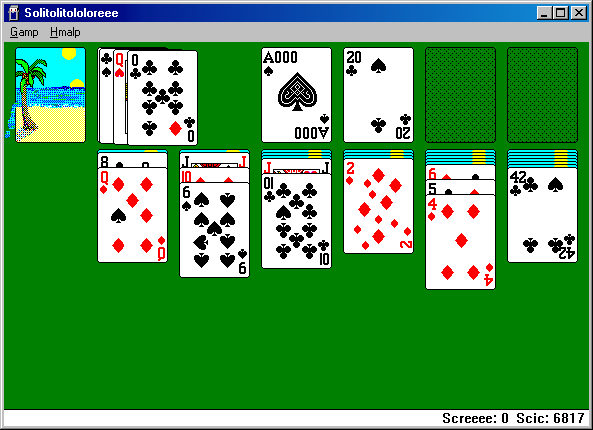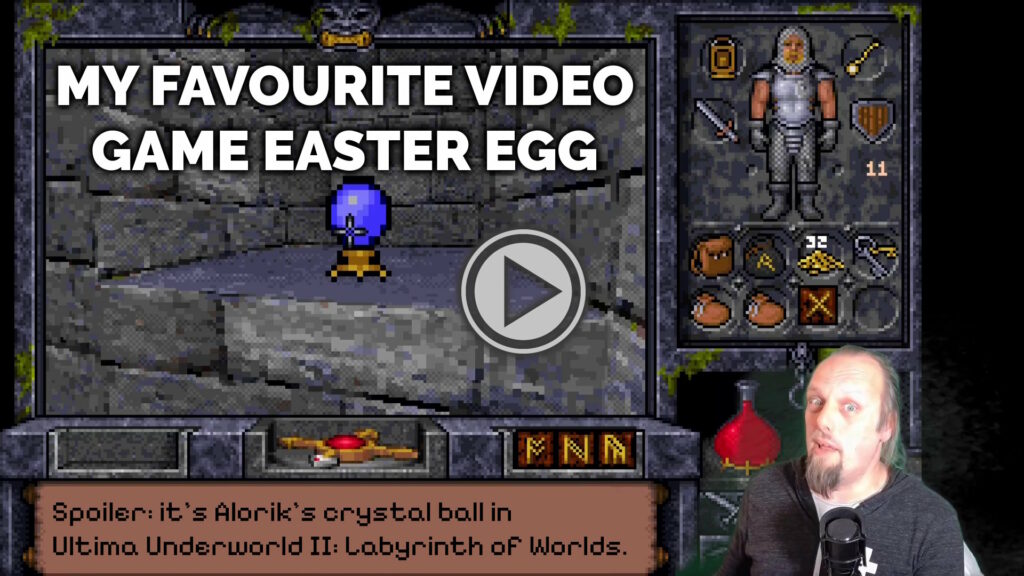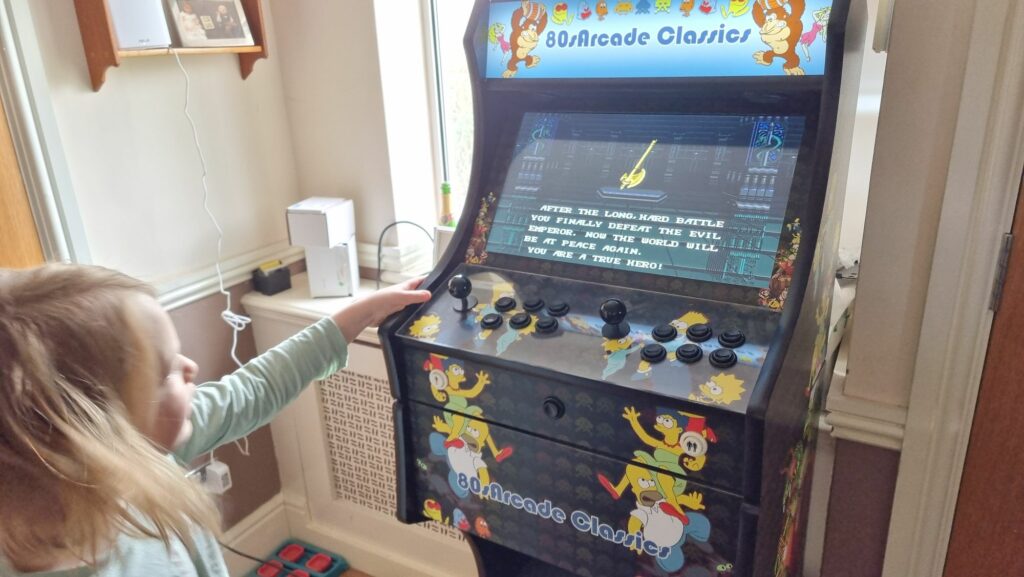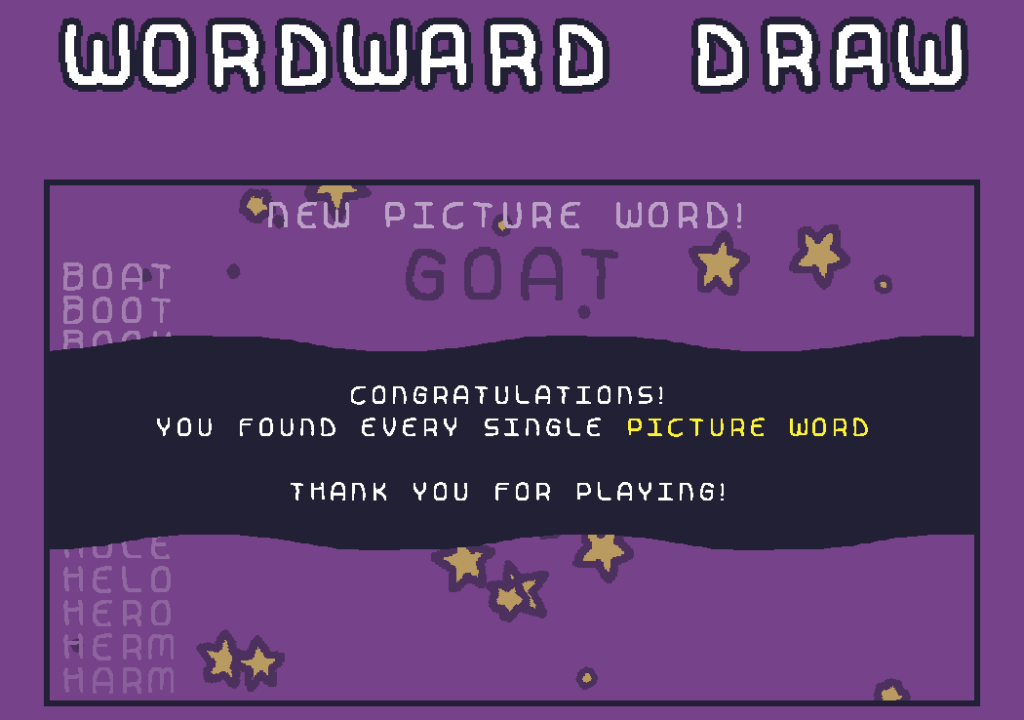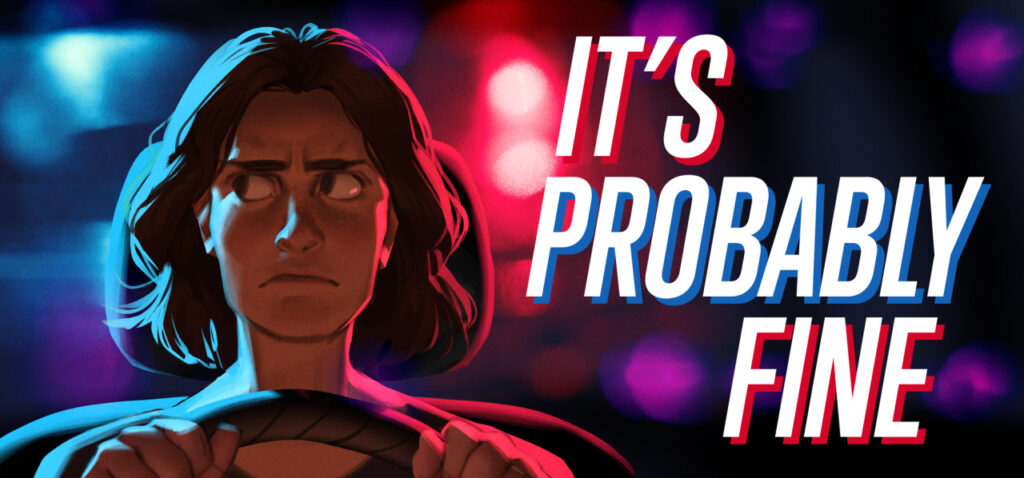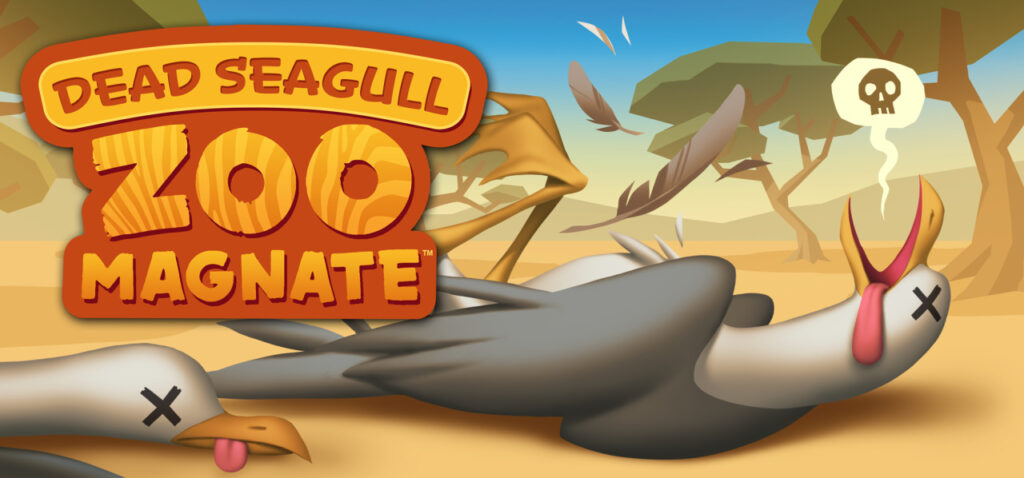I always preferred SkiFree!
Tag: video games
Ranking Every Elevator in the Myst Series
This article is a repost promoting content originally published elsewhere. See more things Dan's reposted.
Part of the joy of the collaborative Internet is that people can share their passion. Today’s example comes from this YouTuber who’s made an hour long video demonstrating and ranking the 35 elevators in the first five games in the Myst series.
Starting with a discussion of what defines an elevator, the video goes on to show off some of the worst of the lifts in the series of games (mostly those that are uninspired, pointless, or which have confusing interfaces) before moving on to the well-liked majority.
I only ever played the first two Myst games (and certainly haven’t played the first since, what, the mid-1990s?) and I don’t think I finished either. But that didn’t stop me watching the entirety of this video and revelling in the sheer level of dedication and focus it’ll have taken on the part of the creator. When I made my (mere 15-minute!) video describing my favourite video game Easter Egg I spent tens of hours over the prior weeks researching the quirk and its background, configuring a copy of the (elderly) game so that it’d play and record in the way I wanted, and of course playing through the game far enough to be able to fully demonstrate the Easter Egg. Dustin’s video, which doubtless involved replaying (possibly multiple times) five different games released over a 12-year window is mindblowing by comparison.
I don’t really care about the Myst series. I care even less about its elevators. But I really enjoyed this video, if only for its creator’s enthusiasm.
ARCC
In the late ’70s, a shadowy group of British technologists concluded that nuclear war was inevitable and secretly started work on a cutting-edge system designed to help rebuild society. And thanks to Matt Round-and-friends at vole.wtf (who I might have mentioned before), the system they created – ARCC – can now be emulated in your browser.
I’ve been playing with it on-and-off all year, and I’ve (finally) managed to finish exploring pretty-much everything the platform currently has to offer, which makes it pretty damn good value for money for the £6.52 I paid for my ticket (the price started at £2.56 and increases by 2p for every ticket sold). But you can get it cheaper than I did if you score 25+ on one of the emulated games.
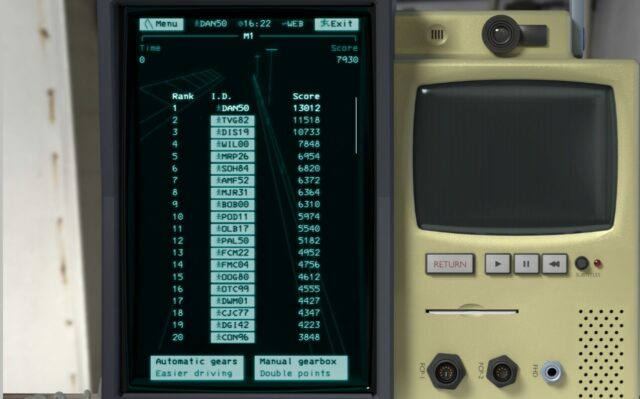
Most of what I just told you is true. Everything… except the premise. There never was a secretive cabal of engineers who made this whackballs computer system. What vole.wtf emulates is an imaginary system, and playing with that system is like stepping into a bizarre alternate timeline or a weird world. Over several separate days of visits you’ll explore more and more of a beautifully-realised fiction that draws from retrocomputing, Cold War fearmongering, early multi-user networks with dumb terminal interfaces, and aesthetics that straddle the tripoint between VHS, Teletext, and BBS systems. Oh yeah, and it’s also a lot like being in a cult.
Needless to say, therefore, it presses all the right buttons for me.

DAN50.
If you enjoy any of those things, maybe you’d like this too. I can’t begin to explain the amount of work that’s gone into it. If you’re looking for anything more-specific in a recommendation, suffice to say: this is a piece of art worth seeing.
A Proper Cup of Tea
This article is a repost promoting content originally published elsewhere. See more things Dan's reposted.
This “choose your own adventure”-style game about making the perfect cup of tea is just… excellent.
If you lack the imagination to understand how a game like this could have dozens of possible endings, you desperately need to play it. My favourite path so far through the game was to add a teabag, then hot water, then remove the teabag, then add some milk, then add a second teabag, then drink it.
Genuinely can’t stop laughing at this masterpiece.
My Favourite Video Game Easter Egg [Video]
This post is also available as an article. So if you'd rather read a conventional blog post of this content, you can!
This vlog is also available as a blog post if you’d rather read what I have to say than watch/listen to me!
Also available on:
My Favourite Video Game Easter Egg
This post is also available as a video. If you'd prefer to watch/listen to me talk about this topic, give it a look.
Spoiler: it’s Alorik’s crystal ball in Ultima Underworld II.
This blog post is also available as a vlog: why not watch & listen to me as I demonstrate my favourite video game Easter egg!
Ultima Underworld II
My favourite video game Easter egg is found in Ultima Underworld II: Labyrinth of Worlds1.
Released early in 1993 after missing a target of Christmas 19922, it undersold despite being almost universally well-received by reviewers3.
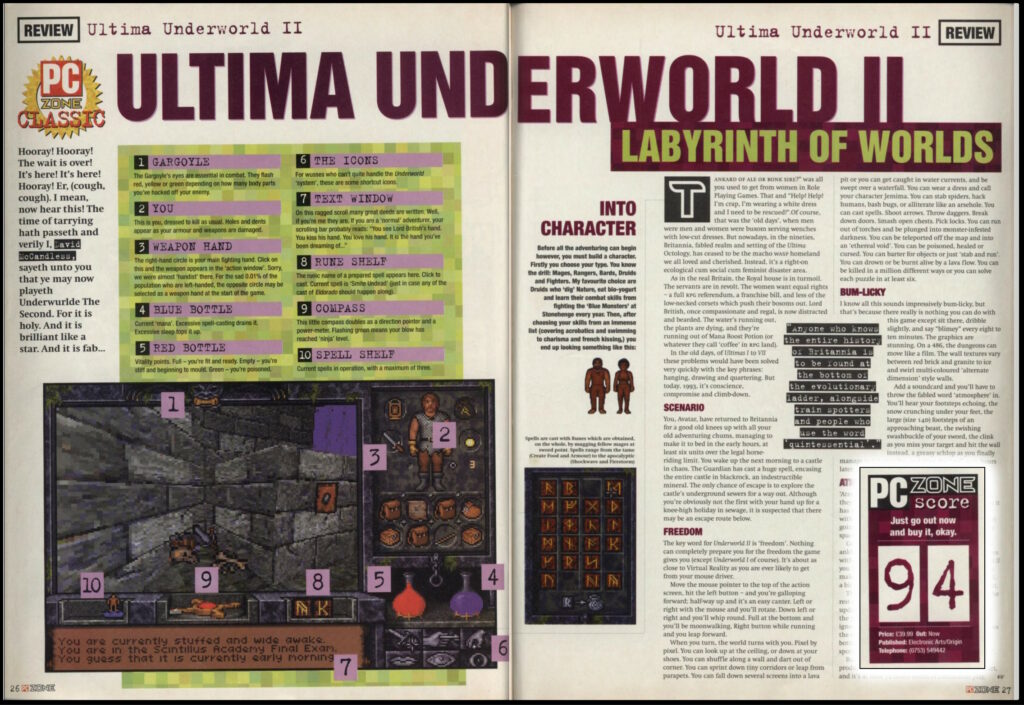
Developed by Looking Glass Technologies, it used an enhanced version of the engine they’d used for the game’s prequel a year earlier4.
The engine is particularly cool for it’s time; it’s sometimes compared to Wolfenstein5, but that’s not entirely fair… on Wolfenstein! The original version of Underworld‘s 3D engine predated Wolfenstein… and yet supported several features that Wolfenstein lacked, like the ability for the player to look up and down and jump over chasms, for example.
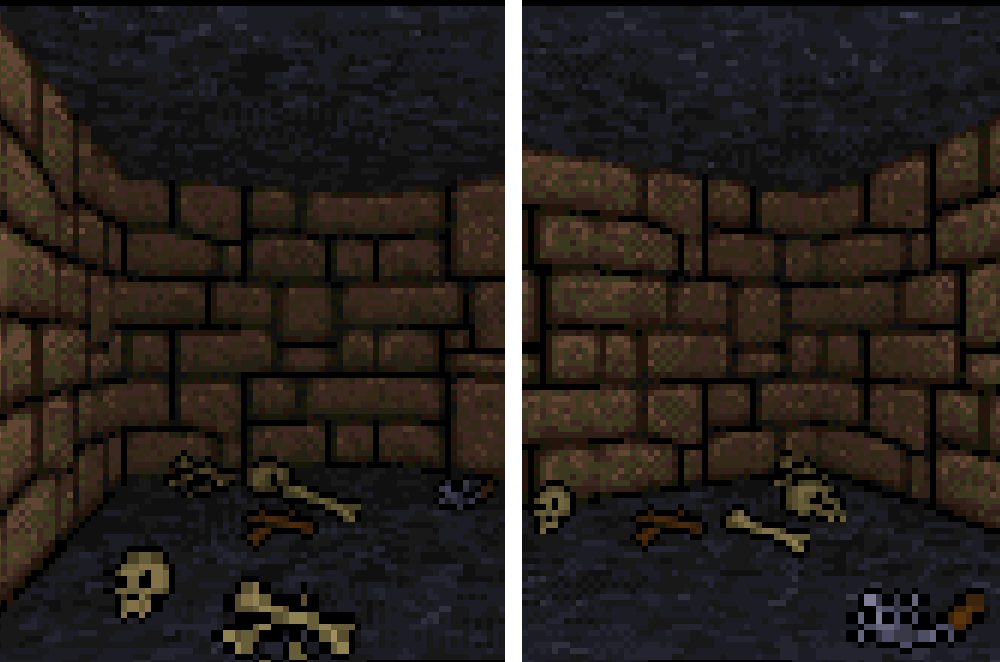
The team’s expertise and code would eventually be used to produce System Shock in 1994. The team’s producer, Warren Spector, would eventually draw from his experience of the Ultima Underworld games when he went on to make Thief: The Dark Project and Deus Ex.
But the technology of Ultima Underworld II and its prequel aren’t as interesting as its approach to storytelling and gameplay. They’re:
- real-time
- first-person
- non-linear
- fantasy roleplaying games
This was a highly innovative combination6.
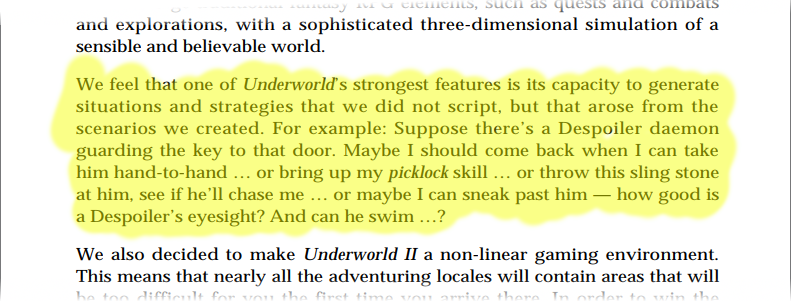
What’s being described there is what we’d now call emergent gameplay, and while it wasn’t completely new in 19937 it was still uncommon enough to be noteworthy.
The Easter Egg
The Ultima series are riddled with Easter eggs, but my favourite is one that I feel is well-hidden, beautiful… and heavily laden with both fan service and foreshadowing!
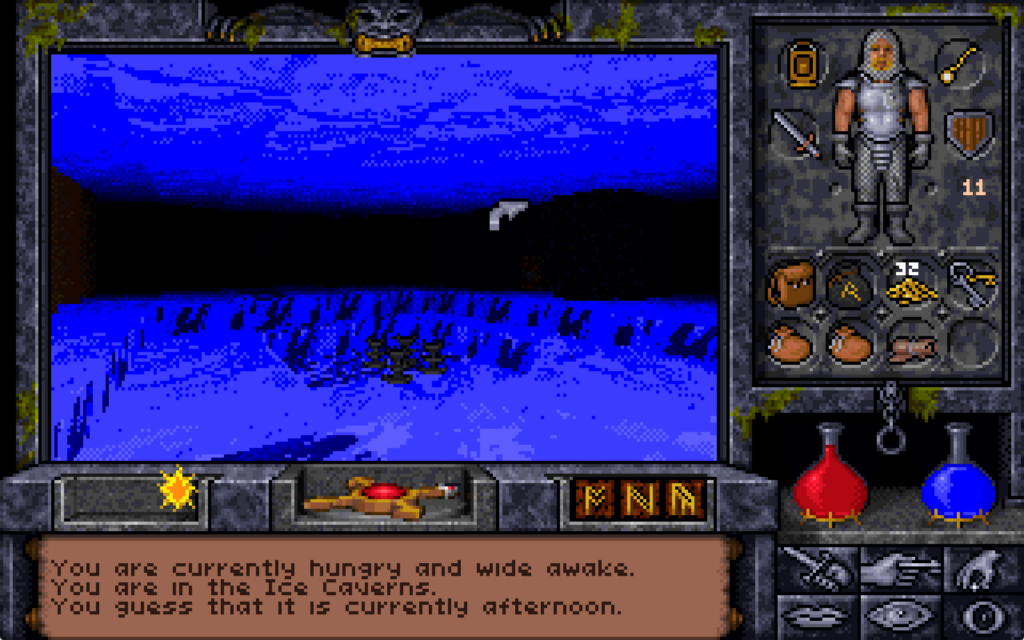
To find the Easter egg, you must first travel to Anodunos. This city was once the capital of a tropical city-state which had become allied to the Guardian, the the principal antagonist of Ultima VII through IX.
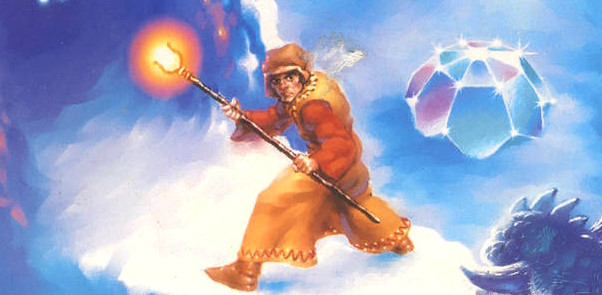
After the city’s major, Beatrice, attempted to put an end to the red titan’s growing demands, the Guardian cursed the city fountain to radiate out a magical cold that eventually froze the entire settlement under a cave of ice.
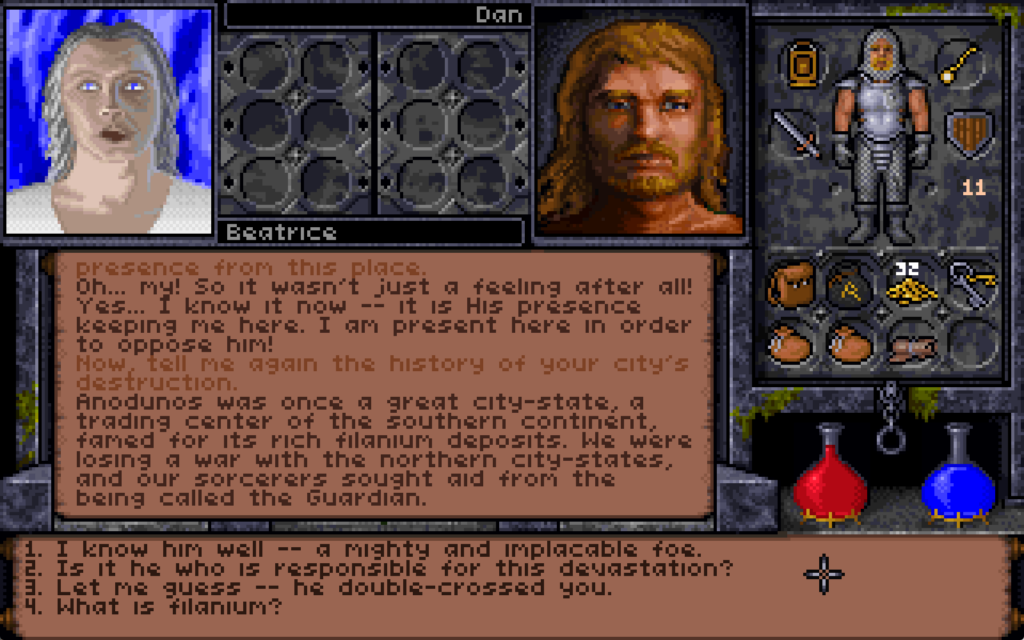
On the Eastern bank of the city’s river we find the remnants of the workshop of the magician Alorik, and in it – if we look in the right place8 – a secret door. We can’t open it though: unusually for a secret door in this game, it’s locked.

I didn’t even find this chamber on my first playthrough of the game. It was only on my second, while using the Map Area spell to help me to draw accurate maps of the entire game world, that I found the room… and even then I spent some time hunting for a switch on the “outside” before eventually giving up and teleporting into the secret room.

There’s valuable treasure here including a sceptre of mana restoration, a “grav” runestone (probably still easier to get than the one at the Scintillus Academy), but what’s most interesting is the crystal ball, which the player can look into to see a vision of another place and, in the case of this orb, another time.
The first time you look into it, you’re told:
You see yourself striving against the forces of Mondain and Minax in the lands of ancient Sosaria.9
Mondain and Minax are the antagonists in Ultima I and Ultima II. We’re seeing the earliest parts of the player character’s adventures.
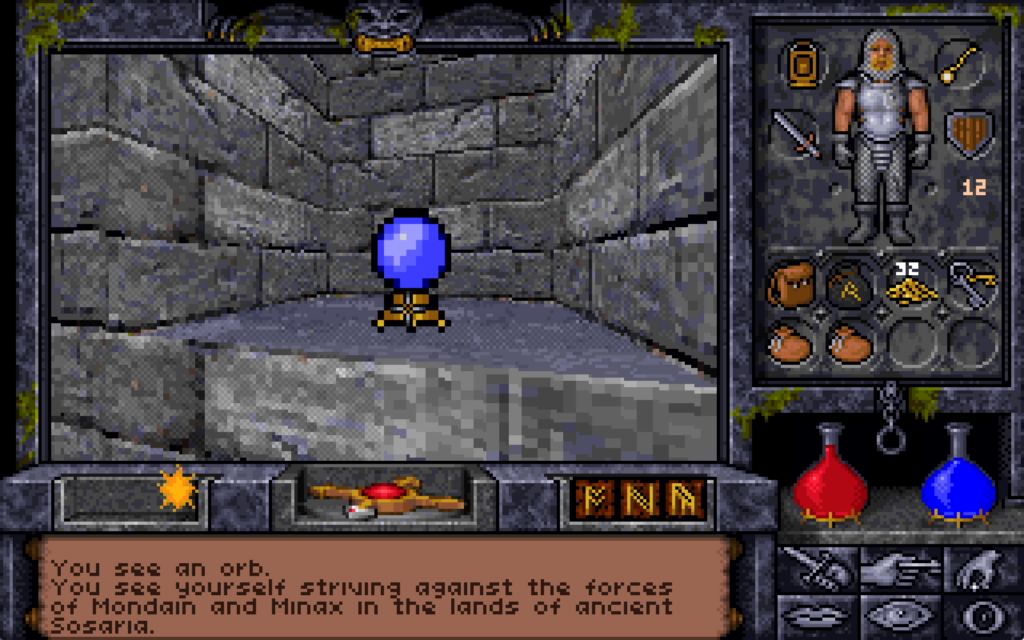
If we look into the crystal ball a second time:
You see yourself climbing to the peak of Olympus Mons on the planet Mars.
This is a reference to the plot of Ultima: Worlds of Adventure 2: Martian Dreams… which is a… weird choice of game to reference.
In my mind, a more logical leap forward in time might have been to jump to Ultima IV10, in which the protagonist first becomes the Avatar of the Eight Virtues and the Hero of Britannia. Martian Dreams is… a sequel to a spinoff of Ultima VI. So why pick that?
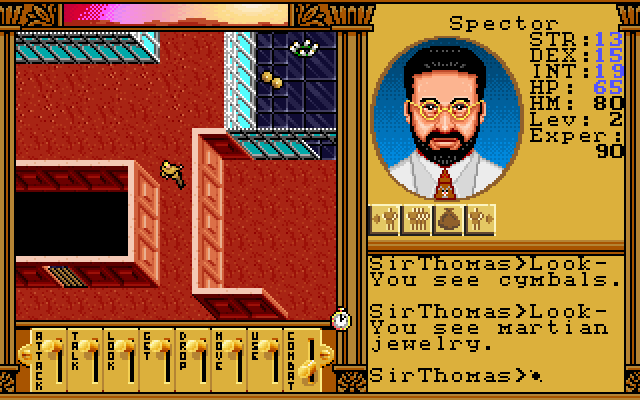
Martian Dreams starts with a friend of the Avatar’s from Earth facilitating the Avatar and their companions to set out on an adventure to the planet Mars. That friend is called Dr. Spector, obviously named for Warren Spector, who helped develop Ultima VI and, of course, this game. This usual choice of vision of the past is a cryptic nod to the producer of Underworld II.
Let’s look again:
You see yourself in the Deep Forest, speaking with the peace-loving simian race of Emps.
This one’s a reference to Ultima VII, the game whose story immediately precedes this one. The Deep Forest seems an strange part of the adventure to choose, though. The Avatar goes to the Deep Forest where, via some emps and then a wisp are eventually lead to the Time Lord11. The Time Lord provides a whole heap of exposition and clues that the Avatar needs to eventually close the Black Gate and win the game.

Do these references serve to hint that this crystal ball, too, is a source of exposition and guidance? Let’s see what it says next.
You see yourself peering into a crystal ball.
I remember the moment I first saw this happen in the game: serious chills! You’ve just found a long-lost, centuries-buried secret chamber, in which there’s a crystal ball. You peer into it and observe a series of moments from throughout your life. You continue to watch, and eventually you see yourself, staring into the crystal ball: you’re seeing the present. So what’s next?
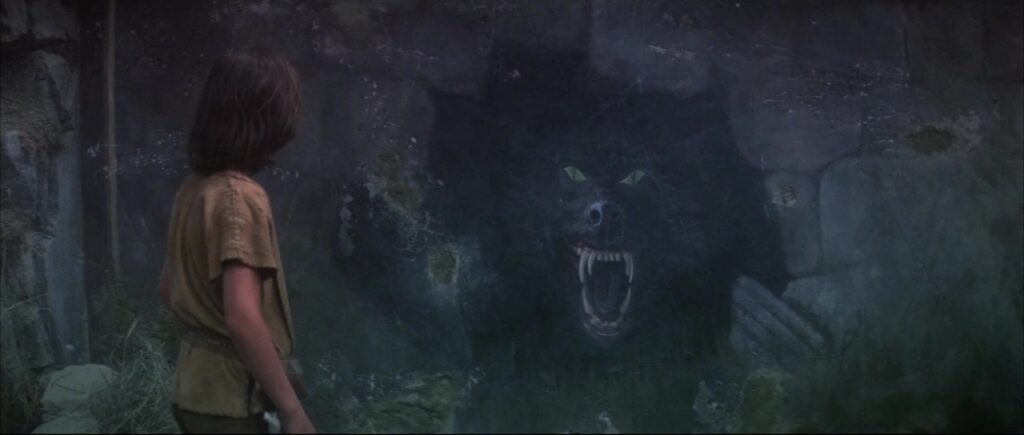
If you look again, you’re asking to see… the unwritten future:
You see yourself winding a great war horn in the throne room of Castle British.
To save Britannia in Ultima Underworld II, the Avatar needs to exploit symmetries implicit in The Guardian’s spellcasting to travel to eight different parallel worlds, find a place from which His power stems, dispel it, encase themselves in a shell of basilisk oil-infused magic mud, immerse themselves in lava to bake it on, find a magic sigil, consume a djinn… it’s a whole thing. But ultimately it all leads to a climactic end scene in which the Avatar raises a horn retrieved from the Tomb of Praecor Loth and blows it to shatter a dome of blackrock.

If you happen to find this clue on your first playthrough, it’s helpful exposition.
But that’s the end of this game, right? How can we possibly peer into the orb again?
You see yourself sailing through majestic pillars cropping up out of the sea, on a voyage of discovery.
What’s being described there is the opening scene from the next game in the series, the as-yet-unreleased Ultima VII Part 2: Serpent Isle!

This vision is a teaser of what’s to come. That’s just… magical, for both the character and the player.
The character uses fortune-telling magic to see their future, but the player is also seeing their future: if they’re playing Ultima Underworld II at or close to its release date, or they’re playing through the games in chronological order, they’re in a literal sense being shown what comes next in their life. That’s really cool.12
Let’s look again:
You see the obscure form of an old and dear friend, as he sacrifices his life for the good of all.
Some time after the party arrives on Serpent Isle, the Avatar’s companions are possessed by the Banes of Chaos and go on a murderous rampage. Later, there’s a ritual that will save the world, but at the cost of the death of one of the heroes. The Avatar is willing to make the ultimate sacrifice, but in the end Sir Dupre takes his place, unwilling to live within himself after seeing the carnage he has wrought.
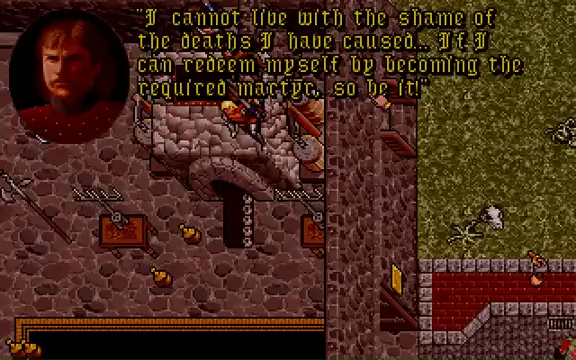
At the end of Serpent Isle, the Avatar is plucked out of space and time and deposited into Pagan, The Guardian’s home base. The plot of Ultima VIII and Ultima IX revolve around the Avatar working to return to a radically-changed Britannia, attempting to fight The Guardian and bring to an end the Age of Armageddon, and ultimately merging and become one with Him before vanishing completely from the world.

Which is why it’s perhaps quite fitting that if the Avatar in Underworld II looks into the orb one final time, they’re told…
You see nothing.
That’s it. That’s the end.
The end of the vision, certainly, but also: a vision of the end.
Depending on how you count the Ultima games13, this is the 13th of 17 in the series. We’re approaching the final chapter, and this Easter egg foreshadows that finale.
I feel hugely privileged that I got to experience it “organically”, by accident, as its authors presumably intended, back in 1993. But it also makes me happy to be able to share the story of it with you14.
If you haven’t seen it yet, you might enjoy watching the vlog version of this post, through which my enthusiasm for the topic might be more-palpable.
Footnotes
1 I’ve doubtless mentioned Ultima Underworld II before: for example both it and Ultima VII, as well as NetHack (mentioned elsewhere in this post) made it into my 2007 list of top 10 computer games that stole my life.
2 The release was delayed owing to testing revealing just too-many bugs, the penultimate of which was squashed on 18 December leaving just one more that the team couldn’t reproduce until the New Year
3 It suffered perhaps for the time of year it was released, but perhaps also for the fact that 1993 was a big year for video games and it was competing with The 7th Guest, Star Wars: Rebel Assault, Return to Zork , Myst, Disney’s Aladdin and, of course – later in the year – Doom.
4 Director/designer Paul Neurath apparently sang the praises of his team for improving texture mapping and viewport size constraints, and he’s right: they’re a huge improvement on Underworld I‘s. Neurath would later go on create the crowdfunded “spiritual successor” Underworld Ascendant, which was critically panned, which just goes to show that sometimes it’s better to get a tight team together and make it “until it’s done” than to put your half-baked idea on Kickstarter and hope you can work it out what you’re making before the money runs out.
5 Like Wolfenstein, the engine uses a mixture of software-rendered 3D (for walls and furniture) overlaid with traditionally-produced sprites (for characters and items).
6 All executed over a year before the release of the very first Elder Scrolls game. Just sayin’.
7 That king of emergent gameplay NetHack was showcasing emergent gameplay in a fantasy roleplaying game way back in the 1980s!
8 An interesting quirk of the game was that if you turned the graphics settings down to their lowest, secret doors would become just as visible as regular doors. If you’re sure there is one but you can’t quite find it, tweaking your graphics settings is much easier than casting a spell!
9 Do you like the “in the style of Underworld II” scrolls I’ve used in this post? I’ve made available the source code you need if you want to use them yourself.
10 Ultima IV is my personal favourite Ultima game, but I see the argument of people who claim that Ultima VII is the best of the series.
11 The Time Lord turns up throughout the game series. Way back in Ultima III, he appears in the Dungeon of Time where he provides a clue essential to defeating Exodus, and he appears or is referenced in most games from Ultima VII onwards. He doesn’t seem to appear in Ultima IV through Ultima VI, except… in Ultima IX, which wouldn’t be released until six years after Underworld II, it’s revealed that the Time Lord is the true identity of the seer Hawkwind… who provided the same kind of exposition and guidance in Ultima IV!
12 How did the Underworld II team know with such certainty what was being planned for Serpent Isle? At some point in 1992 project director Jeff George left Origin Studios and was replaced by lead designer Bill Armintrout, and the role of producer was assigned to… Warren Spector again! For some time, Spector was involved with both projects, providing an easy conduit for inter-team leaks.
13 How you count Ultima games and what specifically should be counted is a source of controversy in fan circles.
14 I’m sure many people reading this will have heard me talk about this particular Easter egg in-person before, over the last couple of decades. Some of you might even have heard me threaten to write a blog post about it, someday. Well: now I have. Tada! It only took me thirty years after experiencing it to write about it here, which is still faster than some things I’ve blogged about!
Golden Axed
Hot on the heels of my victory over Wonder Boy 35 years after I first played it, I can now finally claim to have beaten Golden Axe, 25 years after I first played it.
Couldn’t have done it without my magic-wielding 7-year-old co-op buddy.
[Bloganuary] Playtime
This post is part of my attempt at Bloganuary 2024. Today’s prompt is:
Do you play in your daily life? What says “playtime” to you?
How do I play? Let me count the ways!
RPGs
I’m involved in no fewer than three different RPG campaigns (DMing the one for The Levellers) right now, plus periodic one-shots. I love a good roleplaying game, especially one that puts character-building and storytelling above rules-lawyering and munchkinery, specifically because that kind of collaborative, imaginative experience feels more like the kind of thing we call “play” when done it’s done by children!

Videogames
I don’t feel like I get remotely as much videogaming time as I used to, and in theory I’ve become more-selective about exactly what I spend my time on1.
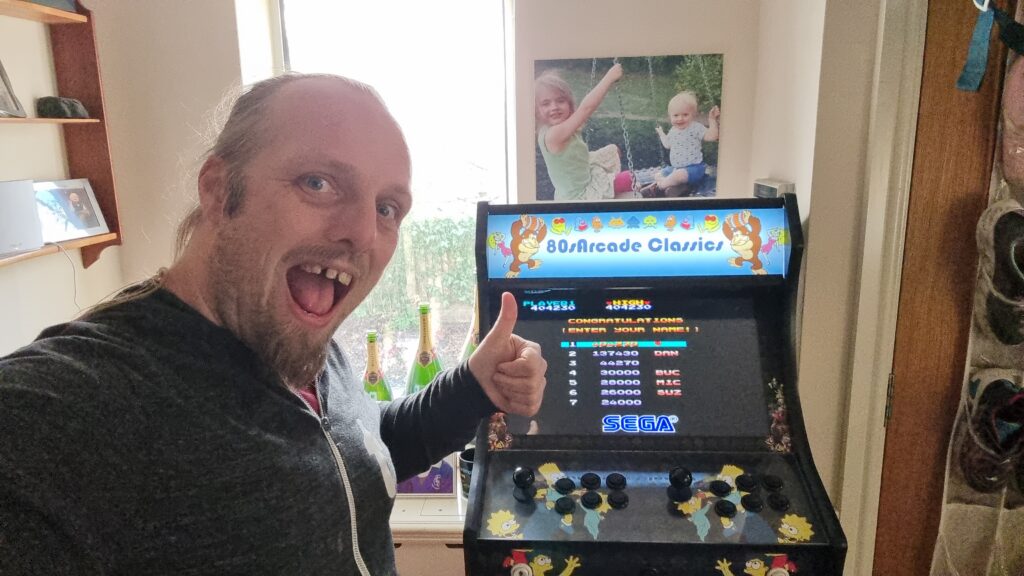
Board Games
Similarly, I don’t feel like I get as much time to grind through my oversized board games collection as I used to2, but that’s improving as the kids get older and can be roped-into a wider diversity of games3.

Escape Rooms
I love a good escape room, and I can’t wait until the kids are old enough for (more of) them too so I’ve an excuse to do more of them. When we’re not playing conventional escape rooms, Ruth and I can sometimes be found playing board game-style boxed “kit” ones (which have very variable quality, in my experience) and we’ve recently tried a little Escape Academy.
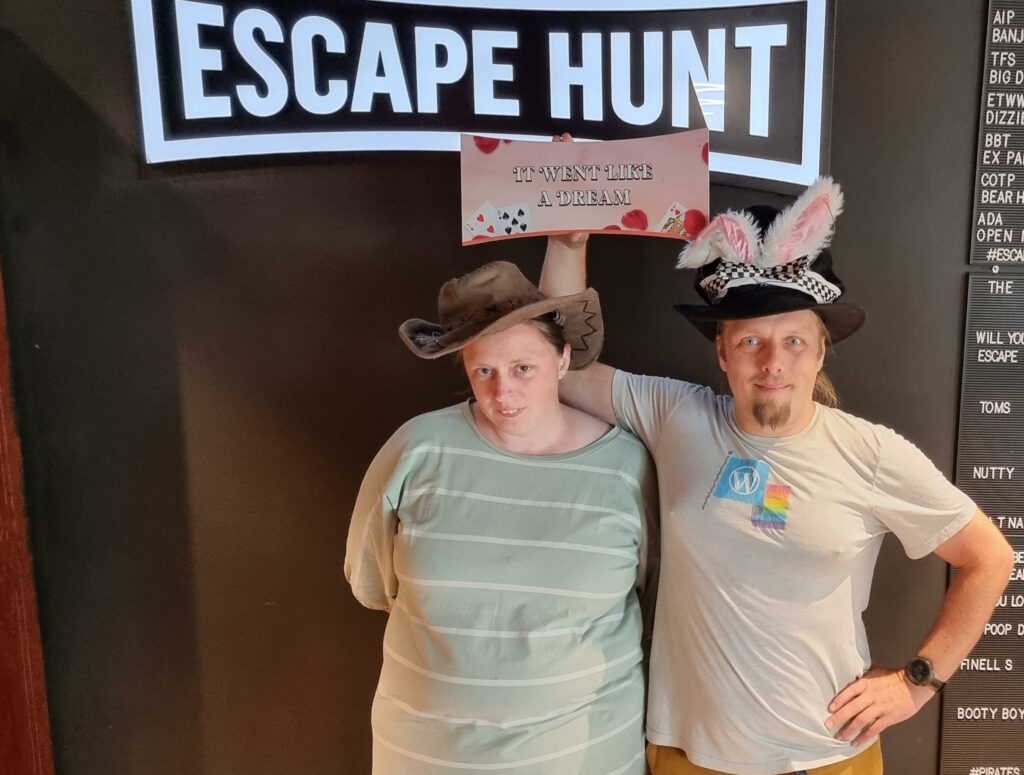
GNSS Activities
I’m sure everybody knows I do a modest amount of geocaching and geohashing.4

They’re not the only satnav-based activities I do at least partially “for fun” though! I contribute to OpenStreetMap, often through the “gamified” experience of the StreetComplete app, and I’m very slowly creeping up the leader board at OpenBenches. Are these “play”? Sure, maybe.
And all of the above is merely the structured kinds of play I engage in. Playing “let’s pretend”-style games with the kids (even when they make it really, really weird) adds a whole extra aspect. Also there’s the increasingly-rare murder mystery parties we sometimes hold: does that count as roleplaying, or some other kind of play?
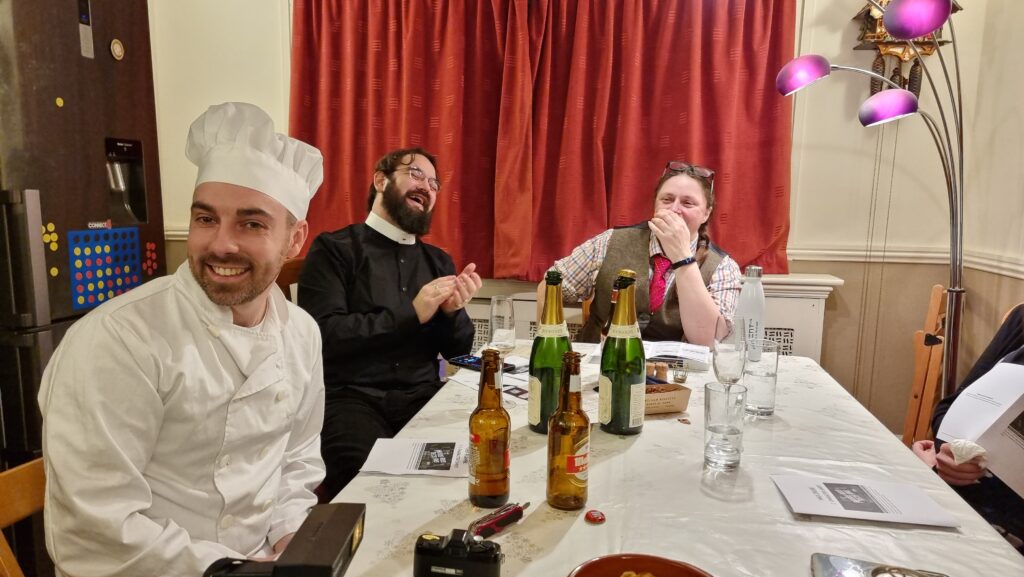
Suffice to say, there’s plenty of play in my life, it’s quite varied and diverse, and there is, if anything, not enough of it!
Footnotes
1 I say that, and yet somehow Steam tells me that one of my most-played games this year was Starfield, which was… meh? Apparently compelling enough that I’ve “ascended” twice, but in hindsight I wish I hadn’t bothered.
2 Someday my group and I will finish Pandemic Legacy: Season 2 so we can get started on Season 0 which has sat unplayed on my shelves since I got it… oooh… two or three years ago‽
3 This Christmas, I got each of them their first “legacy” game: Zombie Kids for the younger one, My City for the elder. They both seem pretty good.
4 Geocaching is where you use military satellite networks to find lost tupperware. Geohashing uses the same technology but what you find is a whole lot of nothing. I don’t think I can explain why I find the latter more-compelling.
Wonder Boy
There are video games that I’ve spent many years playing (sometimes on-and-off) before finally beating them for the first time. I spent three years playing Dune II before I finally beat it as every house. It took twice that to reach the end of Ultima Underworld II. But today, I can add a new contender1 to that list.
Today, over thirty-five years after I first played it, I finally completed Wonder Boy.

My first experience of the game, in the 1980s, was on a coin-op machine where I’d discovered I could get away with trading the 20p piece I’d been given by my parents to use as a deposit on a locker that week for two games on the machine. I wasn’t very good at it, but something about the cutesy graphics and catchy chip-tune music grabbed my attention and it became my favourite arcade game.
I played it once or twice more when I found it in arcades, as an older child. I played various console ports of it and found them disappointing. I tried it a couple of times in MAME. But I didn’t really put any effort into it until a hotel we stayed at during a family holiday to Paris in October had a bank of free-to-play arcade machines rigged with Pandora’s Box clones so they could be used to play a few thousand different arcade classics. Including Wonder Boy.
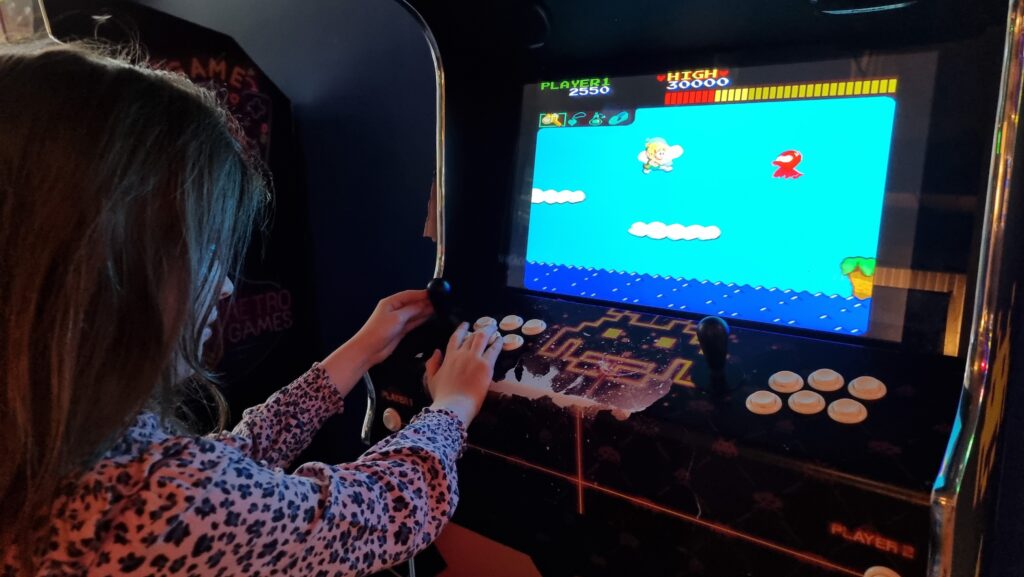
Off the back of all the fun the kids had, it’s perhaps no surprise that I arranged for a similar machine to be delivered to us as a gift “to the family”2 this Christmas.

And so my interest in the game was awakened and I threw easily a hundred pounds worth of free-play games of Wonder Boy3 over the last few days. Until…
…today, I finally defeated the seventh ogre4, saved the kingdom, etc. It was a hell of a battle. I can’t count how many times I pressed the “insert coin” button on that final section, how many little axes I’d throw into the beast’s head while dodging his fireballs, etc.
So yeah, that’s done, now. I guess I can get back to finishing Wonder Boy: The Dragon’s Trap, the 2017 remake of a 1989 game I adored!5 It’s aged amazingly well!
Footnotes
1 This may be the final record for time spent playing a video game before beating it, unless someday I ever achieve a (non-cheating) NetHack ascension.
2 The kids have had plenty of enjoyment out of it so far, but their time on the machine is somewhat eclipsed by Owen playing Street Fighter II Turbo and Streets of Rage on it and, of course, by my rediscovered obsession with Wonder Boy.
3 The arcade cabinet still hasn’t quite paid for itself in tenpences-saved, despite my grinding of Wonder Boy. Yet.
4 I took to calling the end-of-world bosses “ogres” when my friends and I swapped tips for the game back in the late 80s, and I refuse to learn any different name for them.[footnote], saved Tina[footnote]Apparently the love interest has a name. Who knew?
5 I completed the original Wonder Boy III: The Dragon’s Trap on a Sega Master System borrowed from my friend Daniel back in around 1990, so it’s not a contender for the list either.
Woodward Draw
This article is a repost promoting content originally published elsewhere. See more things Dan's reposted.
- Explore the set of 4 letter words
- Either change one letter of the previous word
- Or rearrange all the letters of the previous word
- Find all 105 picture words!
Woodward Draw by Daniel Linssen is the kind of game that my inner Scrabble player both loves and hates. I’ve been playing on and off for the last three days to complete it, and it’s been great. While not perfectly polished1 and with a few rough edges2, it’s still a great example of what one developer can do with a little time.
It deserves a hat tip of respect, but I hope you’ll give it more than that by going and playing it (it’s free, and you can play online or download a copy3). I should probably check out their other games!
Footnotes
1 At one point the background colour, in order to match a picture word, changed to almost the same colour as the text of the three words to find!
2 The tutorial-like beginning is a bit confusing until you realise that you have to play the turn you’re told to, to begin with, for example.
3 Downloadable version is Windows only.
Werewolves and Wanderer [Video]
This post is also available as an article. So if you'd rather read a conventional blog post of this content, you can!
This video accompanies a blog post of the same title. The content is mostly the same; the blog post contains a few extra elements (especially in the footnotes!). Enjoy whichever one you choose.
Also available on YouTube and on Facebook.
Werewolves and Wanderer
This post is also available as a video. If you'd prefer to watch/listen to me talk about this topic, give it a look.
This blog post is also available as a video. Would you prefer to watch/listen to me tell you about the video game that had the biggest impact on my life?
Of all of the videogames I’ve ever played, perhaps the one that’s had the biggest impact on my life1 was: Werewolves and (the) Wanderer.2
This simple text-based adventure was originally written by Tim Hartnell for use in his 1983 book Creating Adventure Games on your Computer. At the time, it was common for computing books and magazines to come with printed copies of program source code which you’d need to re-type on your own computer, printing being significantly many orders of magnitude cheaper than computer media.3

I’d been working my way through the operating manual for our microcomputer, trying to understand it all.5
![Scan of a ring-bound page from a technical manual. The page describes the use of the "INPUT" command, saying "This command is used to let the computer know that it is expecting something to be typed in, for example, the answer to a question". The page goes on to provide a code example of a program which requests the user's age and then says "you look younger than [age] years old.", substituting in their age. The page then explains how it was the use of a variable that allowed this transaction to occur.](/_q23u/2023/07/cpc664-manual-input-command.png)
[ENTER] at the end of each line.
In particular, I found myself comparing Werewolves to my first attempt at a text-based adventure. Using what little I’d grokked of programming so far, I’d put together
a series of passages (blocks of PRINT statements6)
with choices (INPUT statements) that sent the player elsewhere in the story (using, of course, the long-considered-harmful GOTO statement), Choose-Your-Own-Adventure style.
Werewolves was… better.

Werewolves and Wanderer was my first lesson in how to structure a program.
Let’s take a look at a couple of segments of code that help illustrate what I mean (here’s the full code, if you’re interested):
10 REM WEREWOLVES AND WANDERER 20 GOSUB 2600:REM INTIALISE 30 GOSUB 160 40 IF RO<>11 THEN 30 50 PEN 1:SOUND 5,100:PRINT:PRINT "YOU'VE DONE IT!!!":GOSUB 3520:SOUND 5,80:PRINT "THAT WAS THE EXIT FROM THE CASTLE!":SOUND 5,200 60 GOSUB 3520 70 PRINT:PRINT "YOU HAVE SUCCEEDED, ";N$;"!":SOUND 5,100 80 PRINT:PRINT "YOU MANAGED TO GET OUT OF THE CASTLE" 90 GOSUB 3520 100 PRINT:PRINT "WELL DONE!" 110 GOSUB 3520:SOUND 5,80 120 PRINT:PRINT "YOUR SCORE IS"; 130 PRINT 3*TALLY+5*STRENGTH+2*WEALTH+FOOD+30*MK:FOR J=1 TO 10:SOUND 5,RND*100+10:NEXT J 140 PRINT:PRINT:PRINT:END ... 2600 REM INTIALISE 2610 MODE 1:BORDER 1:INK 0,1:INK 1,24:INK 2,26:INK 3,18:PAPER 0:PEN 2 2620 RANDOMIZE TIME 2630 WEALTH=75:FOOD=0 2640 STRENGTH=100 2650 TALLY=0 2660 MK=0:REM NO. OF MONSTERS KILLED ... 3510 REM DELAY LOOP 3520 FOR T=1 TO 900:NEXT T 3530 RETURN
...) have been added for readability/your convenience.
What’s interesting about the code above? Well…
- The code for “what to do when you win the game” is very near the top. “Winning” is the default state. The rest of the adventure exists to obstruct that. In a language with enforced line numbering and no screen editor7, it makes sense to put fixed-length code at the top… saving space for the adventure to grow below.
- Two subroutines are called (the
GOSUBstatements):- The first sets up the game state: initialising the screen (
2610), the RNG (2620), and player characteristics (2630–2660). This also makes it easy to call it again (e.g. if the player is given the option to “start over”). This subroutine goes on to set up the adventure map (more on that later). - The second starts on line
160: this is the “main game” logic. After it runs, each time, line40checksIF RO<>11 THEN 30. This tests whether the player’s location (RO) is room 11: if so, they’ve exited the castle and won the adventure. Otherwise, flow returns to line30and the “main game” subroutine happens again. This broken-out loop improving the readability and maintainability of the code.8
- The first sets up the game state: initialising the screen (
- A common subroutine is the “delay loop” (line
3520). It just counts to 900! On a known (slow) processor of fixed speed, this is a simpler way to put a delay in than relying on a real-time clock.
The game setup gets more interesting still when it comes to setting up the adventure map. Here’s how it looks:
2680 REM SET UP CASTLE 2690 DIM A(19,7):CHECKSUM=0 2700 FOR B=1 TO 19 2710 FOR C=1 TO 7 2720 READ A(B,C):CHECKSUM=CHECKSUM+A(B,C) 2730 NEXT C:NEXT B 2740 IF CHECKSUM<>355 THEN PRINT "ERROR IN ROOM DATA":END ... 2840 REM ALLOT TREASURE 2850 FOR J=1 TO 7 2860 M=INT(RND*19)+1 2870 IF M=6 OR M=11 OR A(M,7)<>0 THEN 2860 2880 A(M,7)=INT(RND*100)+100 2890 NEXT J 2910 REM ALLOT MONSTERS 2920 FOR J=1 TO 6 2930 M=INT(RND*18)+1 2940 IF M=6 OR M=11 OR A(M,7)<>0 THEN 2930 2950 A(M,7)=-J 2960 NEXT J 2970 A(4,7)=100+INT(RND*100) 2980 A(16,7)=100+INT(RND*100) ... 3310 DATA 0, 2, 0, 0, 0, 0, 0 3320 DATA 1, 3, 3, 0, 0, 0, 0 3330 DATA 2, 0, 5, 2, 0, 0, 0 3340 DATA 0, 5, 0, 0, 0, 0, 0 3350 DATA 4, 0, 0, 3, 15, 13, 0 3360 DATA 0, 0, 1, 0, 0, 0, 0 3370 DATA 0, 8, 0, 0, 0, 0, 0 3380 DATA 7, 10, 0, 0, 0, 0, 0 3390 DATA 0, 19, 0, 8, 0, 8, 0 3400 DATA 8, 0, 11, 0, 0, 0, 0 3410 DATA 0, 0, 10, 0, 0, 0, 0 3420 DATA 0, 0, 0, 13, 0, 0, 0 3430 DATA 0, 0, 12, 0, 5, 0, 0 3440 DATA 0, 15, 17, 0, 0, 0, 0 3450 DATA 14, 0, 0, 0, 0, 5, 0 3460 DATA 17, 0, 19, 0, 0, 0, 0 3470 DATA 18, 16, 0, 14, 0, 0, 0 3480 DATA 0, 17, 0, 0, 0, 0, 0 3490 DATA 9, 0, 16, 0, 0, 0, 0
DATA statements form a “table”.
What’s this code doing?
- Line
2690defines an array (DIM) with two dimensions9 (19 by 7). This will store room data, an approach that allows code to be shared between all rooms: much cleaner than my first attempt at an adventure with each room having its ownINPUThandler. - The two-level loop on lines
2700through2730populates the room data from theDATAblocks. Nowadays you’d probably put that data in a separate file (probably JSON!). Each “row” represents a room, 1 to 19. Each “column” represents the room you end up at if you travel in a given direction: North, South, East, West, Up, or Down. The seventh column – always zero – represents whether a monster (negative number) or treasure (positive number) is found in that room. This column perhaps needn’t have been included: I imagine it’s a holdover from some previous version in which the locations of some or all of the treasures or monsters were hard-coded. - The loop beginning on line
2850selects seven rooms and adds a random amount of treasure to each. The loop beginning on line2920places each of six monsters (numbered-1through-6) in randomly-selected rooms. In both cases, the start and finish rooms, and any room with a treasure or monster, is ineligible. When my 8-year-old self finally deciphered what was going on I was awestruck at this simple approach to making the game dynamic. - Rooms 4 and 16 always receive treasure (lines
2970–2980), replacing any treasure or monster already there: the Private Meeting Room (always worth a diversion!) and the Treasury, respectively. - Curiously, room 9 (the lift) defines three exits, even though it’s impossible to take an action in this location: the player teleports to room 10 on arrival! Again, I assume this is vestigal code from an earlier implementation.
- The “checksum” that’s tested on line
2740is cute, and a younger me appreciated deciphering it. I’m not convinced it’s necessary (it sums all of the values in theDATAstatements and expects355to limit tampering) though, or even useful: it certainly makes it harder to modify the rooms, which may undermine the code’s value as a teaching aid!

Something you might notice is missing is the room descriptions. Arrays in this language are strictly typed: this array can only contain integers and not strings. But there are other reasons: line length limitations would have required trimming some of the longer descriptions. Also, many rooms have dynamic content, usually based on random numbers, which would be challenging to implement in this way.
As a child, I did once try to refactor the code so that an eighth column of data specified the line number to which control should pass to display the room description. That’s
a bit of a no-no from a “mixing data and logic” perspective, but a cool example of metaprogramming before I even knew it! This didn’t work, though: it turns out you can’t pass a
variable to a Locomotive BASIC GOTO or GOSUB. Boo!10

Werewolves and Wanderer has many faults11. But I’m clearly not the only developer whose early skills were honed and improved by this game, or who hold a special place in their heart for it. Just while writing this post, I discovered:
- A moderately-faithful Inform reimplementation
- A less-faithful semi-graphical adaptation
- A C# reimplementation with a web interface (video)
- An ongoing livestreamed effort to reimplement as a Sierra-style point-and-click adventure
- An Applesoft BASIC implementation which includes a dynamically-revealed map
- A C reimplementation with a high score table
- A somewhat-faithful reimplementation in Rust (playable online via WebAssembly)
- A very accurate rendition in Python
- A Ruby/Python microservices-based implementation
- Many, many people commenting on the above or elsewhere about how instrumental the game was in their programming journey, too.
A decade or so later, I’d be taking my first steps as a professional software engineer. A couple more decades later, I’m still doing it.
And perhaps that adventure -the one that’s occupied my entire adult life – was facilitated by this text-based one from the 1980s.
Footnotes
1 The game that had the biggest impact on my life, it might surprise you to hear, is not among the “top ten videogames that stole my life” that I wrote about almost exactly 16 years ago nor the follow-up list I published in its incomplete form three years later. Turns out that time and impact are not interchangable. Who knew?
2 The game is variously known as Werewolves and Wanderer, Werewolves and
Wanderers, or Werewolves and the
Wanderer. Or, on any system I’ve been on, WERE.BAS, WEREWOLF.BAS, or WEREWOLV.BAS, thanks to the CPC’s eight-point-three filename limit.
3 Additionally, it was thought that having to undertake the (painstakingly tiresome) process of manually re-entering the source code for a program might help teach you a little about the code and how it worked, although this depended very much on how readable the code and its comments were. Tragically, the more comprehensible some code is, the more long-winded the re-entry process.
4 The CPC’s got a fascinating history in its own right, but you can read that any time.
5 One of my favourite features of home microcomputers was that seconds after you turned them on, you could start programming. Your prompt was an interface to a programming language. That magic had begun to fade by the time DOS came to dominate (sure, you can program using batch files, but they’re neither as elegant nor sophisticated as any BASIC dialect) and was completely lost by the era of booting directly into graphical operating systems. One of my favourite features about the Web is that it gives you some of that magic back again: thanks to the debugger in a modern browser, you can “tinker” with other people’s code once more, right from the same tool you load up every time. (Unfortunately, mobile devices – which have fast become the dominant way for people to use the Internet – have reversed this trend again. Try to View Source on your mobile – if you don’t already know how, it’s not an easy job!)
6 In particular, one frustration I remember from my first text-based adventure was that I’d been unable to work around Locomotive BASIC’s lack of string escape sequences – not that I yet knew what such a thing would be called – in order to put quote marks inside a quoted string!
7 “Screen editors” is what we initially called what you’d nowadays call a “text editor”: an application that lets you see a page of text at the same time, move your cursor about the place, and insert text wherever you feel like. It may also provide features like copy/paste and optional overtyping. Screen editors require more resources (and aren’t suitable for use on a teleprinter) compared to line editors, which preceeded them. Line editors only let you view and edit a single line at a time, which is how most of my first 6 years of programming was done.
8 In a modern programming language, you might use while true or similar for a
main game loop, but this requires pushing the “outside” position to the stack… and early BASIC dialects often had strict (and small, by modern standards) limits on stack height that
would have made this a risk compared to simply calling a subroutine from one line and then jumping back to that line on the next.
9 A neat feature of Locomotive BASIC over many contemporary and older BASIC dialects was its support for multidimensional arrays. A common feature in modern programming languages, this language feature used to be pretty rare, and programmers had to do bits of division and modulus arithmetic to work around the limitation… which, I can promise you, becomes painful the first time you have to deal with an array of three or more dimensions!
10 In reality, this was rather unnecessary, because the ON x GOSUB command
can – and does, in this program – accept multiple jump points and selects the one
referenced by the variable x.
11 Aside from those mentioned already, other clear faults include: impenetrable controls unless you’ve been given instuctions (although that was the way at the time); the shopkeeper will penalise you for trying to spend money you don’t have, except on food, presumably as a result of programmer laziness; you can lose your flaming torch, but you can’t buy spares in advance (you can pay for more, and you lose the money, but you don’t get a spare); some of the line spacing is sometimes a little wonky; combat’s a bit of a drag; lack of feedback to acknowledge the command you enterted and that it was successful; WHAT’S WITH ALL THE CAPITALS; some rooms don’t adequately describe their exits; the map is a bit linear; etc.
Satoru Iwata’s first commercial game has a secret
This article is a repost promoting content originally published elsewhere. See more things Dan's reposted.
This was a delightful vlog. It really adds personality to what might otherwise have been a story only about technology and history.
I subscribed to Codex’s vlog like… four years ago? He went dark soon afterwards, but thanks to the magic of RSS, I got notified as soon as he came back from his hiatus.
Sisyphus: The Board Game (Digital Edition)
I’m off work sick today: it’s just a cold, but it’s had a damn good go at wrecking my lungs and I feel pretty lousy. You know how when you’ve got too much of a brain-fog to trust yourself with production systems but you still want to write code (or is that just me?), so this morning I threw together a really, really stupid project which you can play online here.
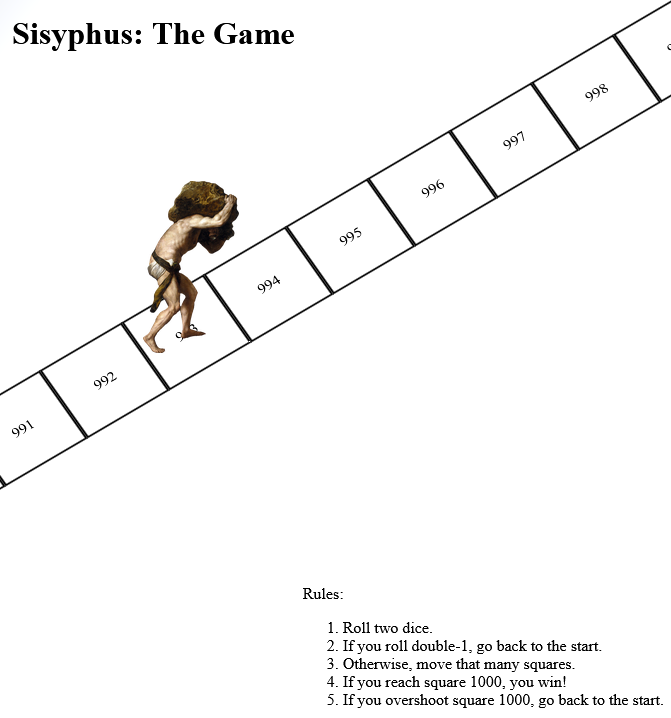
It’s inspired by a toot by Mason”Tailsteak” Williams (whom I’ve mentioned before once or twice). At first I thought I’d try to calculate the odds of winning at his proposed game, or how many times one might expect to play before winning, but I haven’t the brainpower for that in my snot-addled brain. So instead I threw together a terrible, terrible digital implementation.
Go play it if, like me, you’ve got nothing smarter that your brain can be doing today.
All the game descriptions from the sale
This article is a repost promoting content originally published elsewhere. See more things Dan's reposted.
You’ve got 37 unpaid parking tickets. You just got pulled over for speeding. In your defense, you were texting your sister about how drunk you are. Plus there’s all that blood on your windshield. Obviously you know it’s deer blood, but the police officers walking toward your vehicle don’t. Still, in the time it takes them to figure that out, maybe you’ll sober up. Or escape on foot! Either way, it’ll probably be fine.
User Tags: Poor Choices / Story Rich / Multiple Endings / Parkour
Collect dead seagulls and build a zoo to house them all. Beautify the zoo with artistic flair and deodorizing sprays. Design creative group promotions to stir up interest! Is that a customer? You’d better hope it’s not the owner of the live seagull zoo down the street, because he’s probably got some questions.
User Tags: Hard Work / Supply / Demand / Diseases & Parasites
…
Claire Hummel produced fake video game art for the Steam Summer Sale, which was already excellent, but when @g-a-y-g-o-y-l-e reblogged, asking for more context, Claire delivered and then some. Every single one of these “game descriptions” is a special kind of comedy gold… and yet somehow believable from the store that sells us Dream Daddy, IKEA VR Pancake Kitchen, Organ Trail, Oh… Sir!! The Insult Simulator, and Goat Simulator (all of which I own copies of). Go read the full list.
